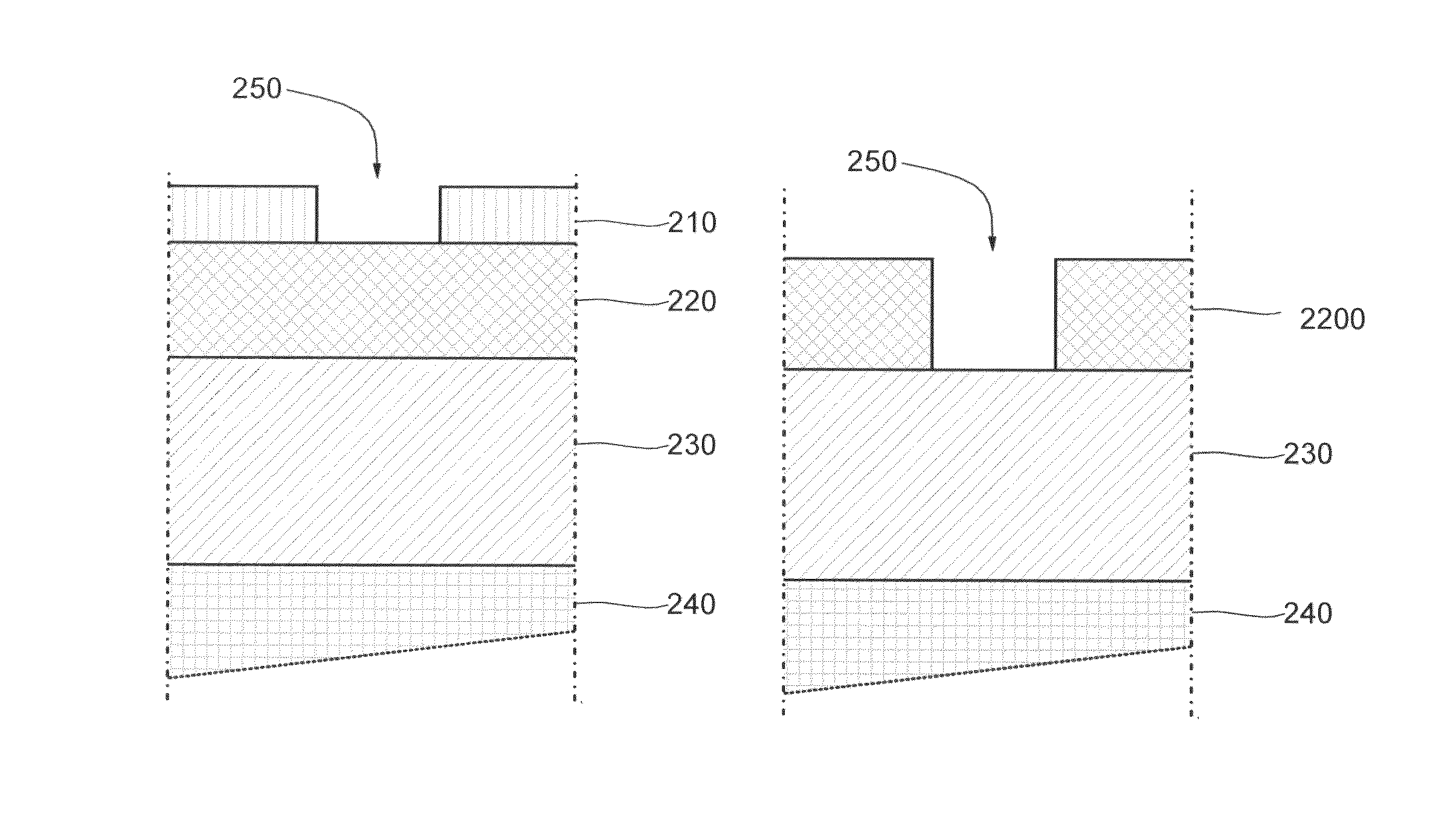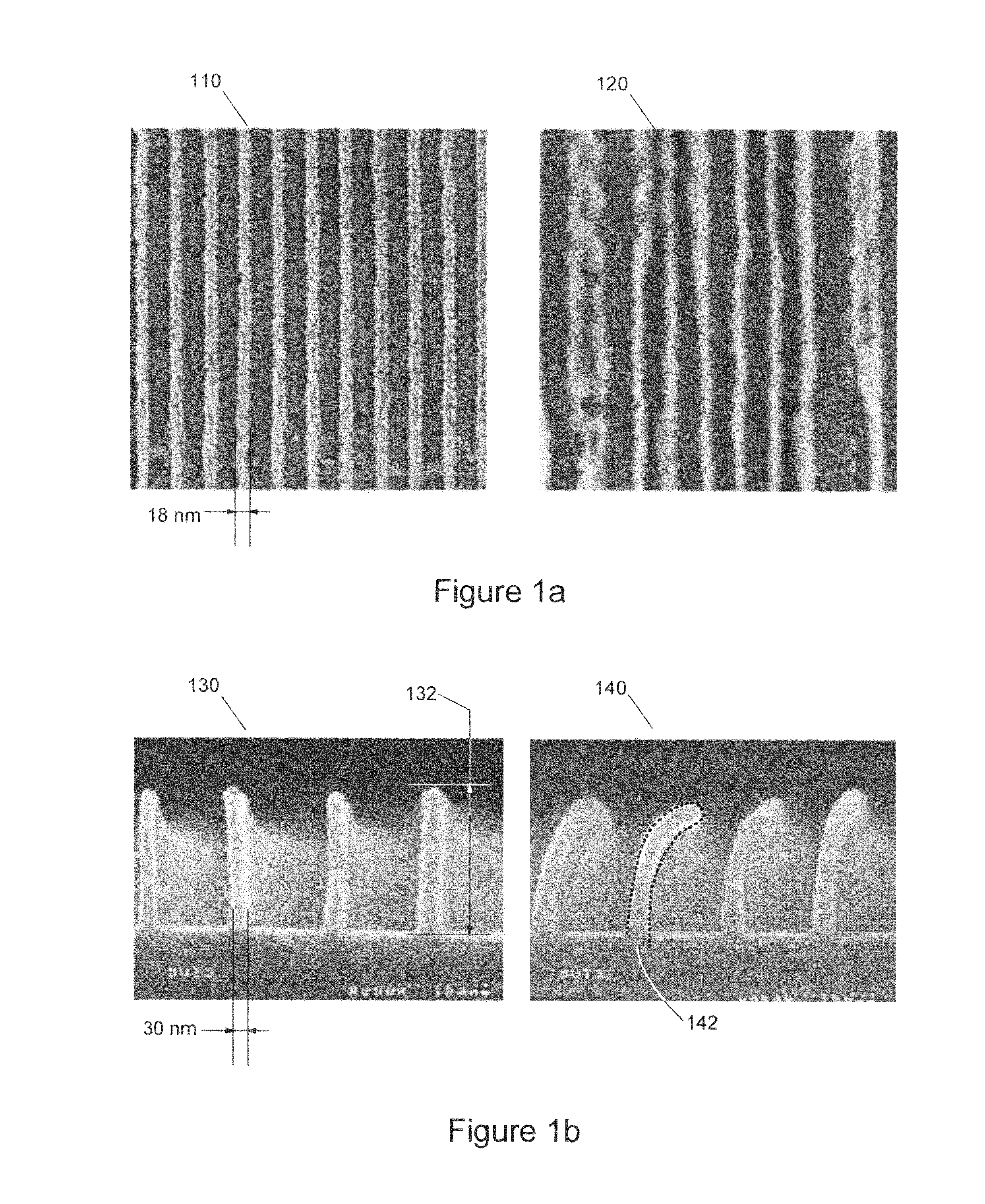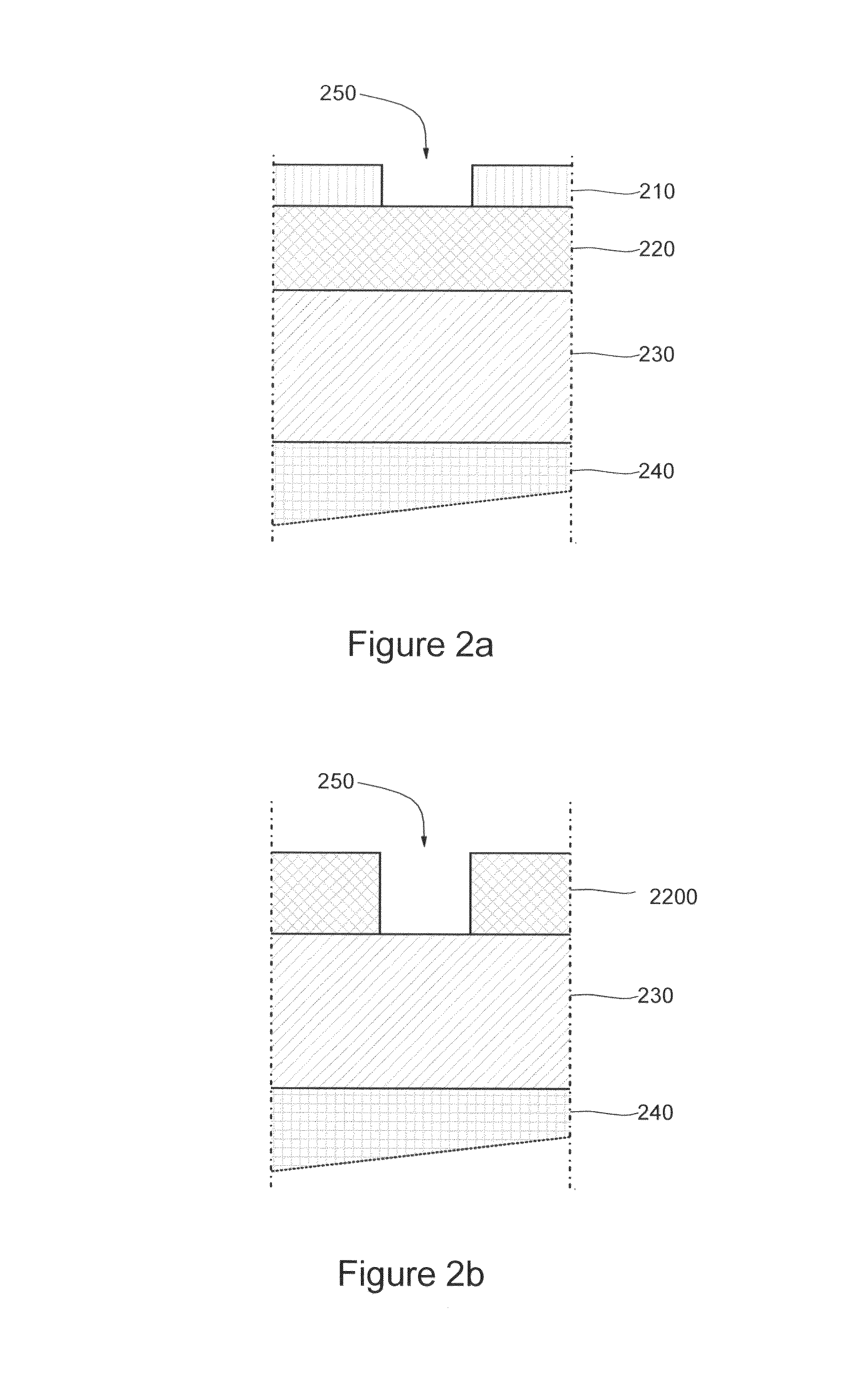Method for isotropic etching
a technology of isotropic etching and etching, which is applied in the field of etching techniques, can solve the problems of affecting the etching quality of carbon-doped boron masks, and the appearance of defects that normally occur with carbon-doped masks, so as to reduce mask distortions, increase productivity, and selectivity significantly higher
- Summary
- Abstract
- Description
- Claims
- Application Information
AI Technical Summary
Benefits of technology
Problems solved by technology
Method used
Image
Examples
Embodiment Construction
[0021]In the context of the present invention, the term “on”, “surmounts” or “underlying” or the equivalents thereof do not necessarily mean “in contact with”. Thus, for example, the deposition of a first layer on a second layer does not necessarily mean that the two layers are directly in contact with each other but means that the first layer at least partially covers the second layer while being either directly in contact therewith or being separated therefrom by another layer or another element.
[0022]In the context of the present invention, a hard mask usually means a mask realised from a material that is not eliminated when resist masks normally used in the art are eliminated. A hard mask is differentiated from a polymer mask or a mask formed by a layer of resist which, after development, makes it possible to transfer patterns into a layer that underlies it. The hard mask is disposed between the resist mask and the layer to be etched. A hard mask is normally an inorganic mask. I...
PUM
| Property | Measurement | Unit |
|---|---|---|
| temperature | aaaaa | aaaaa |
| width | aaaaa | aaaaa |
| thickness | aaaaa | aaaaa |
Abstract
Description
Claims
Application Information
 Login to View More
Login to View More - R&D
- Intellectual Property
- Life Sciences
- Materials
- Tech Scout
- Unparalleled Data Quality
- Higher Quality Content
- 60% Fewer Hallucinations
Browse by: Latest US Patents, China's latest patents, Technical Efficacy Thesaurus, Application Domain, Technology Topic, Popular Technical Reports.
© 2025 PatSnap. All rights reserved.Legal|Privacy policy|Modern Slavery Act Transparency Statement|Sitemap|About US| Contact US: help@patsnap.com



